What is the Best Bush to Put in the Front of Your House? Top Options to Enhance Curb Appeal
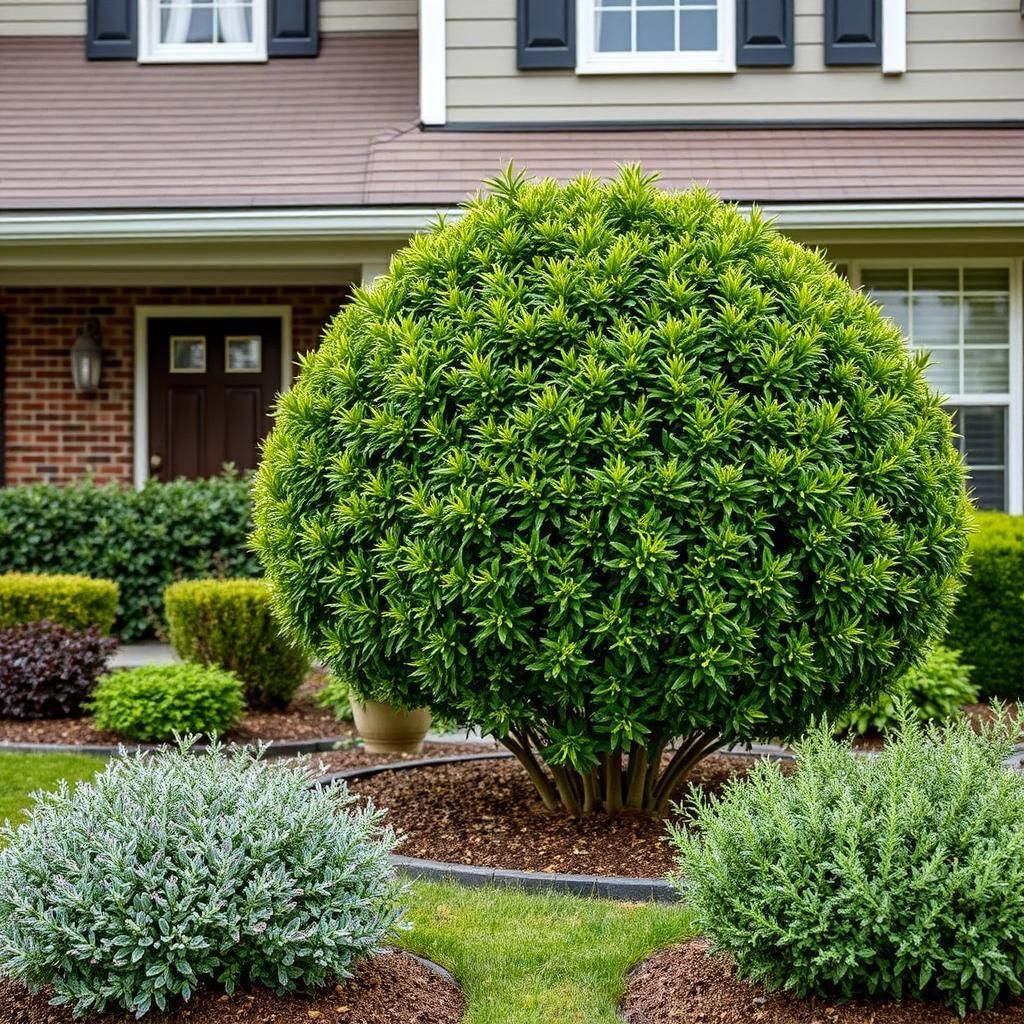
When it comes to boosting the curb appeal of your home, the right bush can make all the difference. A well-chosen shrub not only enhances the aesthetic of your front yard but can also frame your house beautifully and create a welcoming atmosphere. With countless options available, selecting the best bush involves considering factors such as climate, maintenance needs, and the overall style of your home. In this article, we will explore the top choices for front yard bushes that marry beauty with functionality, helping you transform your home's exterior into an inviting landscape that reflects your personal style.
What is the Best Bush to Put in the Front of Your House?
When selecting the best bush for the front of your house, consider factors such as climate, sunlight, and aesthetic preferences. Some popular options include boxwood, azalea, and hydrangea, each offering unique features that can enhance your home's curb appeal. Boxwoods are known for their evergreen foliage and ability to be easily shaped, while azaleas provide spectacular bursts of color during the blooming season. Hydrangeas are another excellent choice, known for their large flower heads and adaptability. Ultimately, the best bush is one that complements your home's architecture and local environmental conditions.
1. Boxwood: The Classic Choice
Boxwood is an excellent option for homeowners seeking a classic and elegant look. This shrub is particularly valued for its ability to maintain its shape and color year-round, making it a timeless choice for traditional and modern landscapes alike. In addition to being low-maintenance, boxwoods can be easily shaped through pruning, allowing for creative landscaping possibilities around your home.
2. Azalea: A Colorful Accent
Azaleas can provide vibrant color to your landscape, making them ideal for homeowners who want to add visual interest. Blooming in the spring, they come in various colors, from white to deep reds, and can thrive in a range of soil types. Azaleas prefer partially shaded areas and can attract pollinators, adding a lively ambiance to your front yard.
3. Hydrangea: A Versatile Flowering Bush
Hydrangeas are favored for their beautiful and large flower clusters that bloom during the summer and fall. They are available in numerous varieties that offer different colors based on the soil pH. These adaptable bushes can suit many garden styles, whether you prefer a casual cottage garden look or a more structured approach. Proper watering and pruning can enhance their growth and flowering potential.
4. Rhododendron: A Hardy Option
Rhododendrons, like azaleas, are part of the same plant family and are known for their large leaves and stunning blooms. They thrive in acidic soils and are best placed in partial shade to avoid sunburn. These shrubs can grow quite large, making them ideal as a privacy screen or to create a natural backdrop in your front yard, showcasing a magnificent display of flowers in spring.
5. Lavender: Aromatic and Attractive
Lavender not only adds beauty to your landscape with its purple blooms and aromatic leaves but also attracts beneficial pollinators like bees and butterflies. This drought-tolerant bush is perfect for homeowners in warmer climates looking for low-maintenance options. Placing lavender near pathways or entrances can enhance your home’s sensory experience while providing a lovely accent.
| Bush Type | Bloom Season | Best Location | Maintenance Level |
|---|---|---|---|
| Boxwood | Evergreen | Full Sun to Partial Shade | Low |
| Azalea | Spring | Partial Shade | Moderate |
| Hydrangea | Summer to Fall | Partial Shade to Full Sun | Moderate |
| Rhododendron | Spring | Partial Shade | Low to Moderate |
| Lavender | Summer | Full Sun | Low |
What is the most low maintenance landscaping for front yard?
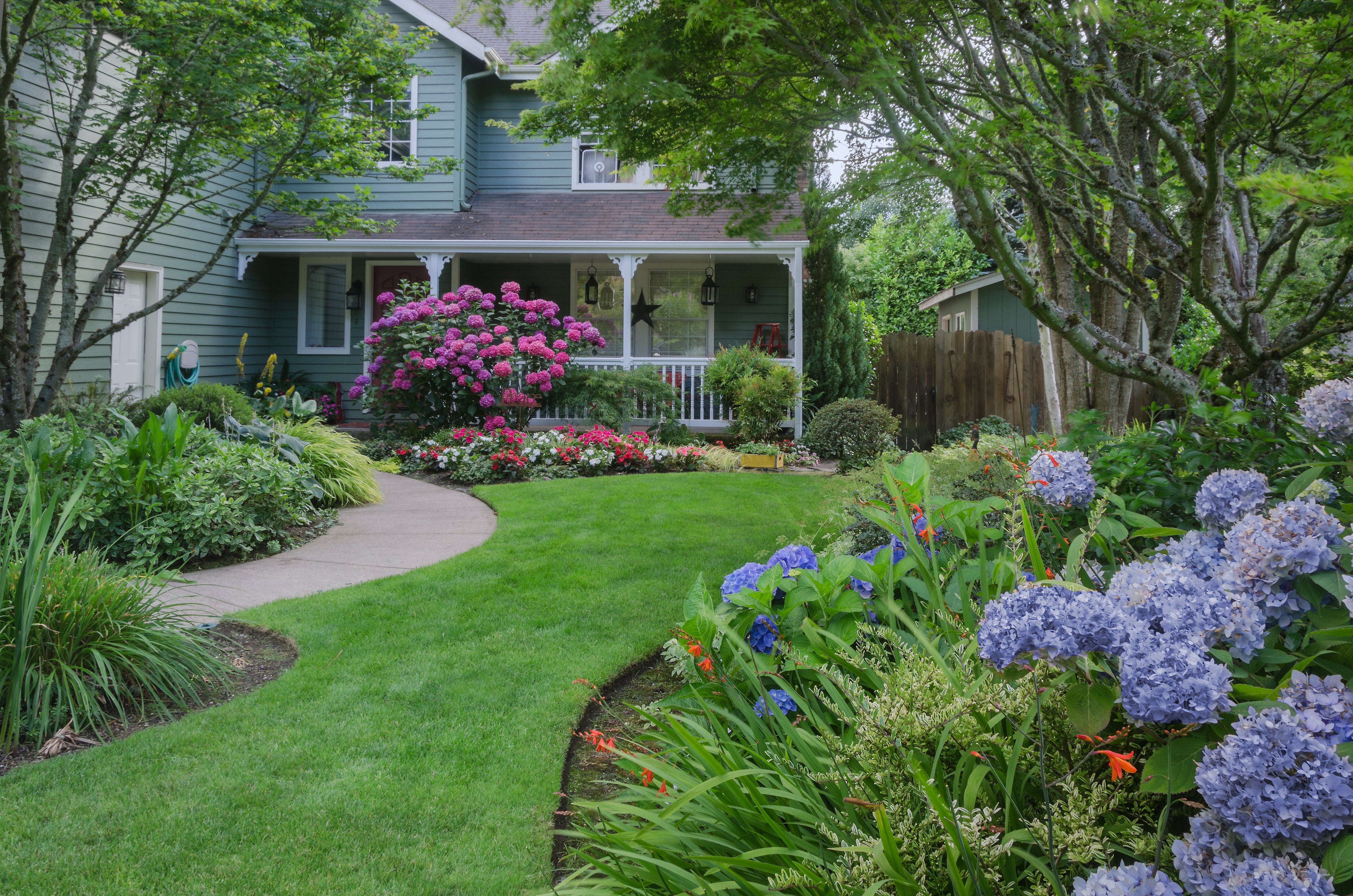
When considering low maintenance landscaping for your front yard, the key is to incorporate elements that require minimal care, are drought-resistant, and offer attractive seasonal interest. Here’s a detailed exploration of the most suitable options:
Choosing the Right Plants
When selecting plants, opt for native species that thrive in your local climate. These plants typically require less water and maintenance than non-native species. A good mix might include:
- Perennials: Plants like daylilies and coneflowers that return each year.
- Succulents: Varieties such as sedums and agaves that store water.
- Ornamental grasses: These add texture and color while being hardy.
Ground Cover Options
Using ground cover plants can dramatically decrease weeding and maintenance. These plants spread to cover the soil effectively, reducing the necessity for grass lawn. Consider:
- Creeping thyme: A fragrant option that attracts pollinators.
- Ajuga (bugleweed): A colorful ground cover with purple flowers.
- Vinca minor: A fast-growing perennial that stays green year-round.
Hardscape Elements
Incorporating hardscaping elements such as pathways, patios, or retaining walls can significantly reduce the area of your yard that needs maintenance. Durable materials like stone or brick can withstand the elements and add aesthetic appeal. Here are some ideas:
- Brick pathways: Offer durability and visual interest while being easy to install.
- Stone patios: Create an outdoor living space with minimal upkeep.
- Gravel areas: These can serve as effective drainage solutions and require little care.
Mulching Techniques
Using mulch around plants and flower beds can conserve moisture, suppress weeds, and enhance the overall look of your landscape. Organic mulches also enrich the soil as they decompose. Consider these options:
- Bark mulch: A long-lasting choice that provides a natural look.
- Wood chips: Ideal for flower beds and paths, breaking down over time.
- Stone mulch: Durable, effective for drainage, and requires little to no replacement.
Irrigation Solutions
Installing an efficient irrigation system can drastically reduce the time spent maintaining your yard. Drip irrigation and soaker hoses minimize water waste and ensure that plants receive adequate hydration. Options include:
- Smart irrigation controllers: Automatically adjust watering schedules based on weather conditions.
- Drip tubing: Delivers water directly to the base of each plant.
- Rain barrels: Collect rainwater to be reused, promoting sustainability.
What is the best thing to plant in front of a house?
:max_bytes(150000):strip_icc()/abelia_miss_lemon_-c42c767035d540cd9ae12d02e6db3d2a.jpg)
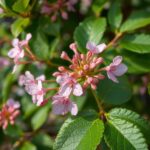
To determine the best plants to place in front of a house, several factors must be considered, including climate, light conditions, and the overall aesthetic the homeowner wishes to achieve. Generally, a combination of shrubs, flowers, and ground cover can create a visually appealing landscape that enhances the property’s curb appeal. Here are a few excellent options:
Choosing the Right Shrubs
Planting shrubs in front of a house can provide structure and year-round interest. When selecting shrubs, consider their growth habits and how they fit into your landscape design. Here are some excellent options:
- Boxwood: An evergreen that can be easily shaped, providing a classic look.
- Hydrangeas: Known for their beautiful blooms and ability to thrive in various conditions.
- Rosemary: A fragrant evergreen that can double as a culinary herb.
Incorporating Colorful Flowers
Adding flowers in front of the house can create a vibrant and welcoming atmosphere. Choosing seasonal flowers can keep the landscape dynamic. Consider these flowers for a colorful display:
- Petunias: Available in many colors, they bloom all summer long.
- Marigolds: Easy to grow and deter pests, making them functional as well as beautiful.
- Daylilies: Low maintenance and come in various colors; they bloom in cycles throughout the summer.
Utilizing Ground Cover Plants
Ground cover plants can help prevent weeds, reduce soil erosion, and add greenery. They work well in areas where grass may struggle to grow. Here are some popular choices:
- Creeping Thyme: An aromatic herb that produces tiny purple flowers and can handle foot traffic.
- Ajuga: Known for its striking foliage and springtime blue flowers.
- Vinca Minor: An evergreen option that produces attractive blooms and spreads quickly.
Considering Hardscape Elements
Integrating hardscape elements such as pathways, stones, or decorative borders can enhance the overall appearance when combined with plants. Here are some suggestions:
- Stone Pathways: Create a natural look while guiding visitors to your entryway.
- Pavers: Use pavers to define planting areas and create visual interest.
- Mulch: A layer of mulch can help retain moisture and deter weeds while giving a neat finish.
Maintenance and Sustainability Considerations
Opt for low-maintenance plants if you seek a sustainable landscape. This will save time and resources while keeping the front yard attractive. Here are practical tips:
- Native Plants: Choose plants that naturally thrive in your area, requiring less water and care.
- Drought-Resistant Varieties: Look for plants that can survive with minimal irrigation.
- Perennials: Select perennials that bloom year after year to reduce annual planting efforts.
What is the lowest maintenance shrub?
:strip_icc()/boxwood-bush-before-pruning-9db5e812-86ef0f18f8ed4c87967053743ebc9da8.jpg)
The lowest maintenance shrub is often considered to be the Boxwood (Buxus spp.). These shrubs are favored for their hardiness, adaptability, and ability to maintain a tidy appearance with minimal care. Boxwoods are evergreen, meaning they retain their leaves year-round, providing structure and greenery to gardens in every season. Their dense foliage can also serve as an effective natural privacy screen.
Key Characteristics of Boxwood Shrubs
Boxwood shrubs possess a variety of key characteristics that make them ideal for low-maintenance gardens. These characteristics include:
- Evergreen Foliage: Boxwoods maintain their leaves throughout the year, providing year-round interest.
- Compact Growth: Due to their slow growth rate, boxwoods require less frequent trimming and shaping.
- Disease Resistance: They are generally resistant to many common pests and diseases, minimizing the need for chemical treatments.
Climate Adaptability
Boxwood shrubs are adaptable to a range of climate conditions, which contributes to their low maintenance requirements. They thrive in various environments, making them suitable for different regions:
- Hardiness Zones: Boxwoods generally tolerate USDA Hardiness Zones 5 to 9, allowing them to be grown in diverse climates.
- Sun and Shade Tolerance: They can grow well in full sun to partial shade, fitting into many garden placements.
- Soil Versatility: Boxwoods adapt to various soil types as long as drainage is adequate.
Minimal Watering Needs
One of the prominent reasons boxwoods are considered low maintenance is their minimal watering needs. They are relatively drought-resistant once established. Their watering requirements can be summarized as follows:
- Established Plants: Once mature, boxwoods require less frequent watering, making them suitable for low-water gardens.
- Early Growth Phase: New plantings need regular watering until they establish roots, typically for the first season.
- Monitoring Soil Moisture: It’s crucial to check soil moisture and adjust watering accordingly to prevent over-watering.
Pruning and Shaping
Boxwood shrubs require minimal pruning and shaping to maintain their desired form. This aspect greatly enhances their low maintenance appeal. The pruning requirements include:
- Infrequent Trimming: Due to their slow growth rate, they generally need pruning only once a year.
- Shaping for Aesthetic: Light shaping can help maintain their desired size and form without excessive effort.
- Timing: The best time for pruning is late winter or early spring before new growth starts.
Common Uses in Landscaping
Boxwoods are widely used in landscaping due to their versatility, creating a range of design possibilities. Their common uses include:
- Formal Hedges: Boxwoods can be shaped into formal hedges, adding sophistication to garden designs.
- Foundation Plantings: They are perfect for planting alongside foundations of homes, complementing architectural features.
- Topiaries and Shapes: Boxwoods can be easily trained into topiaries, enhancing garden creativity.
What shrubs look good all year?
:max_bytes(150000):strip_icc()/evergreen-shrubs-curb-appeal-gardenia-getty-0623-898022459fdc42fd824d774e8b7280c1.jpg)
Certainly! Here's the detailed response to your question regarding shrubs that look good all year, along with relevant subheadings:
See also: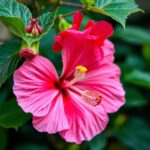
What Shrubs Look Good All Year?
When considering shrubs that maintain their appearance throughout the year, it's essential to look for those that provide consistent foliage, color, and structural interest across the seasons. Here are several shrubs known for their all-year beauty:
1. Evergreen Shrubs: These shrubs retain their leaves year-round, offering a lush appearance that contributes to your landscape even in winter.
2. Variegated Foliage: Variegated shrubs, which have mixed colors on their leaves, can stand out regardless of the season, adding visual interest.
3. Flowering Shrubs: Some flowering shrubs provide appealing blooms during specific seasons while maintaining attractive foliage year-round.
4. Cold-Resistant Varieties: Selecting shrubs that can withstand harsh weather conditions ensures they look great in all climates.
5. Low-Maintenance Options: Shrubs that require minimal care often stay visually appealing with little effort on the gardener's part.
Evergreen Shrubs
Evergreen shrubs are the backbone of a year-round attractive garden. These plants provide consistent greenery, serving as a backdrop for seasonal blooms and creating a sense of fullness in the landscape. Some popular evergreen shrubs include:
- Pine – Known for their needle-like leaves and conical shapes.
- Boxwood – Versatile and can be shaped into various forms.
- Juniper – Offers a variety of shapes and colors, from low ground cover to tall varieties.
Variegated Foliage Shrubs
Variegated foliage shrubs bring a striking contrast to your garden with leaves that feature multiple colors, such as green mixed with cream, yellow, or white. This consistent visual interest can brighten up dull areas, making them a great addition for all seasons. Examples include:
- Golden Euonymus – Bright, golden-yellow edges make it stand out.
- Variegated Holly – Provides both berries and attractive leaves.
- Japanese Kerria – Offers yellow flowers in spring and variegated foliage year-round.
Flowering Shrubs
Choosing flowering shrubs that bloom at various times can ensure that your garden looks vibrant throughout the year. Look for shrubs with a long flowering period or those that provide stunning foliage in off-seasons. Top choices include:
- Hydrangea – Known for their large, showy flowers and attractive leaves.
- Azalea – Blooms in spring with beautiful colors and remains lush.
- Camellia – Offers flowers in late winter to spring, while its foliage remains full.
Cold-Resistant Varieties
For those living in areas with harsh winters, selecting cold-resistant shrubs is crucial. These plants stay healthy and look good despite extreme cold, ensuring your landscape looks appealing year-round. Notable options include:
- Winterberry – This deciduous holly offers bright red berries in winter.
- Firethorn – Provides attractive orange berries and thorny structure.
- Barberry – Adaptable and colorful, with variations that provide visual interest.
Low-Maintenance Options
If you're aiming for shrubs that look great all year without excessive upkeep, consider low-maintenance varieties. These shrubs usually have disease resistance and robust growth habits, making them perfect for busy gardeners. Some favorites are:
- Spirea – Hardy and low-maintenance, with lovely blooms.
- Butterfly Bush – Attracts pollinators and maintains its allure.
- Rhododendron – Stunning blooms and evergreen leaves with little care required.
Questions from Our Readers
What factors should I consider when choosing a bush for the front of my house?
Choosing a bush for the front of your house involves considering climate, sunlight exposure, and soil type. It's also vital to think about the size and shape of the bush, ensuring it complements your home's architecture and maintains easy access for maintenance. Low-maintenance options are often preferred for ease of care.
Are there specific bushes that are recommended for curb appeal?
Yes, there are several bushes known for enhancing curb appeal. Some popular choices include boxwood, which offers a classic look, and hydrangeas for their vibrant blooms. Rose bushes also add color and elegance, while lavender can provide a lovely fragrance and attract pollinators, enhancing the overall aesthetic of your front yard.
How can I maintain the bushes I plant in front of my house?
To maintain your front yard bushes, regular pruning is essential to encourage healthy growth and shape. Additionally, ensure they receive adequate water and consider using fertilizers to boost their health, especially during the growing season. Monitoring for pests and diseases, along with proper mulching, can greatly enhance their resilience.
See also: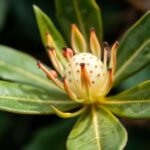
What is the best time of year to plant bushes in front of my house?
The best time to plant bushes is typically in the spring or fall, when temperatures are milder, and the plants can establish their roots more effectively. Planting during these seasons can reduce stress on the bushes, allowing them to focus on growth rather than survival, which enhances their chances of thriving in your garden.

If you want to read more articles like What is the Best Bush to Put in the Front of Your House? Top Options to Enhance Curb Appeal, we recommend you check out our Shrubs category.
Leave a Reply
Related Articles